Today's Guide to the Marketing Jungle from Social Media Examiner...
presented by 
The weekend is almost here, Alluser! Here's a recap of the most important insights, trends, and updates from the week. Catch up in minutes and go into next week prepared.
In today's edition:
-
Sell more with Reels using these tips
-
Turning UGC into highly-performing ads
-
Stop LinkedIn from cutting off your video elements
-
Video vs. Video Experiences: The formula for conversions
-
Building AI agents for your business
-
TikTok Updates: Shop features, Live tools, alt text, and more
-
Nine full-featured, no-cost AI tools
-
Customer Personas: Do yours leave money on the table?
-
🗞️ Industry news from Instagram, LinkedIn, YouTube and more
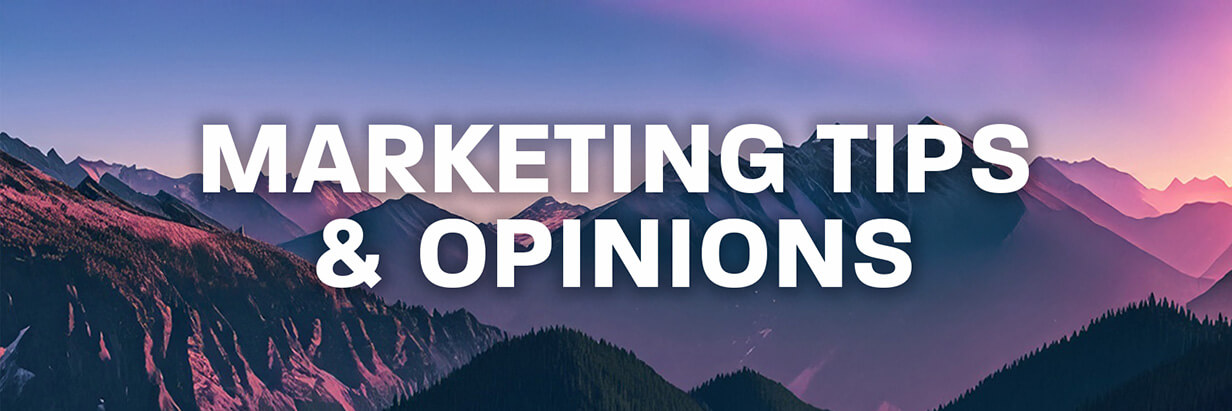
Two Ways to Sell With Reels
Shannon McKinstrie is sharing two super simple Reels tactics specifically designed to showcase what your customers and clients love about your products in a way that makes new viewers instantly connect.
Whether you're selling tangible or digital products, these formats work across all industries.
She walks through three real-world examples from a jewelry designer, a hot tub seller, and her own business to show you exactly how to adapt these approaches for your specific niche. Watch more here.
Are Your Ads Too... Polished?
Does your audience scroll right past your perfectly crafted ads? That's because today's consumers can spot traditional advertising from a mile away. Meanwhile, the brands crushing it are tapping into something much more powerful - their own customers' content.
UGC (user-generated content) ads are transforming how businesses connect with audiences. Instead of polished studio shots, imagine showcasing real people actually using and loving your products. The stats don't lie - these authentic ads outperform traditional campaigns by up to 29%, with a whopping 79% of people saying UGC directly influences what they buy.
Neal Schaffer shares a strategy that works across platforms like Instagram, TikTok, and Facebook without breaking your marketing budget. But there's an art to doing it right.
From encouraging customers to create shareable content to navigating the legal considerations, there's a whole framework for turning everyday users into your most convincing brand advocates.
Want to learn how brands like Modcloth and Aerie have leveraged UGC to dramatically boost sales and engagement? Are you curious about the specific tactics that transform customer content into conversion machines? Read more here.
LinkedIn Video: The Secret Safe Zones
Tired of your carefully crafted vertical videos getting chopped up on LinkedIn? After months of frustration watching her captions disappear and key visuals get cut off, Michelle J. Raymond tracked down LinkedIn's official specs showing exactly where the safe zones are.
Turns out we have way less usable space than we thought (especially for those of us who love big, bold captions).
She shared the actual graphic from LinkedIn in her full post so you can see exactly where to position your important content. This is gold if you're serious about video marketing that doesn't get mangled by the platform. Read more here.
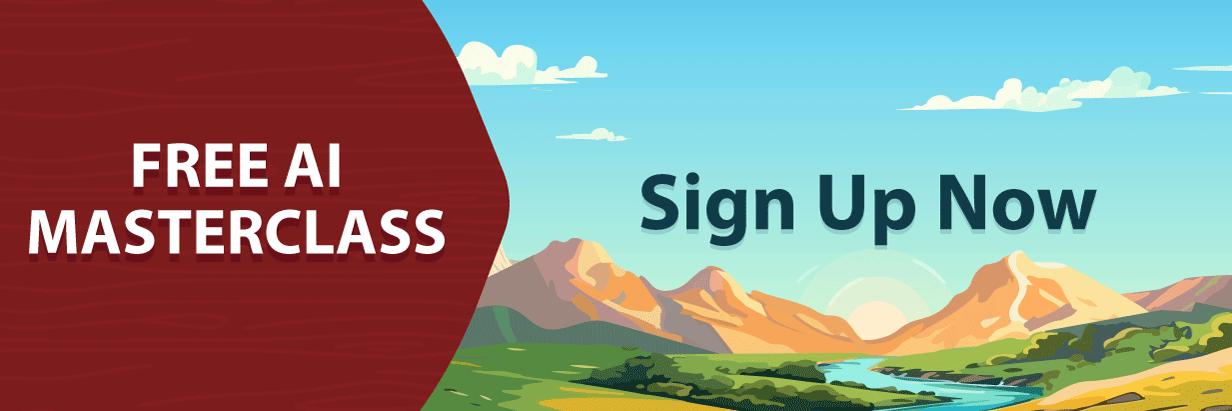
Struggling to Keep Up With the Rapid Evolution of AI?
Do you want to increase your productivity, enhance your creativity, and become truly indispensable in the age of artificial intelligence?
Join AI Marketing expert Dan Sanchez live for a free masterclass where he uncovers 25 tools that will forever change how you create content. You'll discover:
-
Timesaving AI tools that turn hours of work into minutes
-
Creative AI solutions for stunning visuals, videos, and written content
-
Automation strategies that multiply your content output
-
And much more!
Sign up for the free masterclass today.
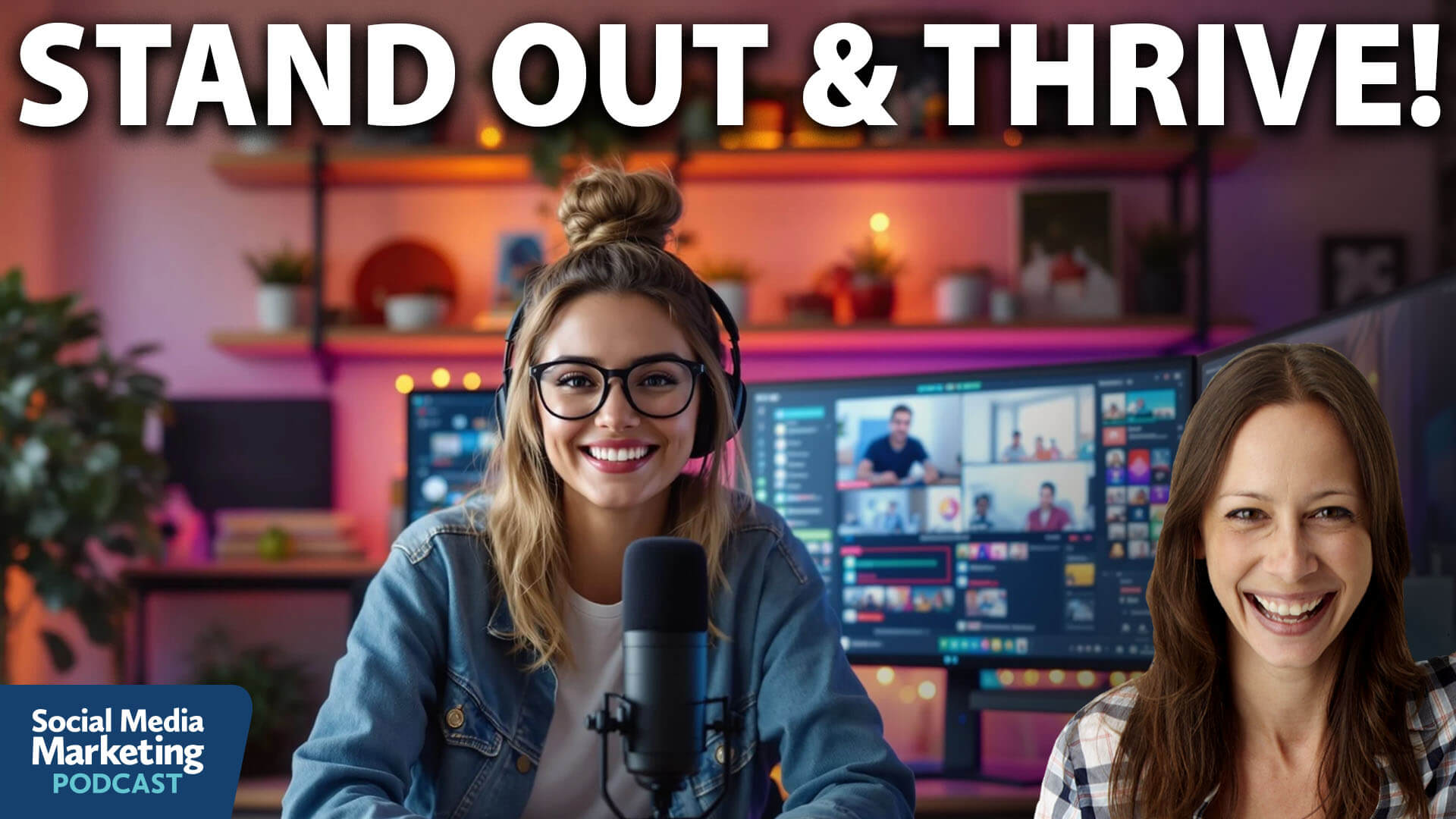
Video Experiences That Create Loyalty, Engagement, and Conversions
There's a significant difference between simply producing video content and crafting an actual video experience. Luria Petrucci, founder of Live Streaming Pros, explains that this distinction is crucial for businesses using video in their marketing.
Her webinars convert at 28-38% regularly, well above industry standards, because she focuses on creating experiences rather than just delivering information.
Her strategy applies to all video formats: social platform live streams like YouTube or Facebook Live, webinars, and virtual events, launch events and challenges, and even Zoom calls and meetings.
Keep in mind, you don't have to implement all of the tactics at one time. Incorporating just one can raise your conversions.
Defining the Video Experience: What Are We Really Talking About?
As Maya Angelou famously said, "People will forget what you said, people will forget what you did, but people will never forget how you made them feel."
The most successful video creators begin by asking a fundamental question before planning any content: "What do I want my audience to feel?"
This simple but powerful question helps you align everything from your visual design to your word choice and call to action around a cohesive emotional experience that resonates with viewers.
Use Visual Aids to Enhance the Experience
Once you've defined the emotional experience you want to create, visual elements become powerful tools for reinforcing that feeling during your video.
These visuals are similar to what we might see in professional broadcasts, such as animations that appear during sporting events after a big play. In the digital environment, they function as overlays on top of your video, adding depth and emotional resonance to key moments.
During a technical explanation, Petrucci overlays math equations graphics to visually represent the feeling of being overwhelmed by complexity.
When participants make purchases during live events, she displays confetti graphics with personalized welcome messages to create excitement and tap into FOMO (fear of missing out).
Choose Words That Match Your Intended Feeling
Infusing your language words that evoke the emotional qualities that match your intended experience can powerfully shape how viewers feel during your video.
For example, if your goal is to help viewers feel cared for, phrases like "I know this is overwhelming, but this is a safe place for you to get through the messy. I've got you covered" creates an entirely different emotional experience than simply stating "Step one, step two, step three."
Even simple catchphrases can become signature elements that foster connection. Petrucci uses "abso-freaking-lutely" in her videos, which often gets a smile from viewers and creates a moment of emotional connection.
The key is intentionality - consciously choosing words that align with how you want people to feel rather than focusing solely on information delivery.
Align Your Call-to-Action with Your Personality
Many content creators struggle with calls to action because they try to follow formulaic approaches that are inauthentic to their personalities.
When your calls-to-action align with your authentic personality and the emotional experience you've been creating, they feel like natural extensions of the conversation rather than jarring sales pitches.
Petrucci's student Evan Gregor is a naturally calm, chill person who struggled with traditional high-energy sales approaches. By shifting to a more authentic approach—"I'd love to take this a step deeper with you, and here's how"—he tripled his conversions in just two months.
More Examples of Video Experiences Based on Emotional Goals
To build trust and credibility, use a clean, professional background with subtle branding as your visual element. Choose words and phrases like "I understand that...", "Many people struggle with...", and "Here's what I've found works best..." Address viewer questions by name and acknowledge different experience levels to create an interactive element that builds trust.
To create excitement and motivation, incorporate bright colors, movement, and celebration graphics for milestones as visual elements. Use phrases like "Imagine what this could mean for you...", "Let's get started!" and "This is where everything changes..." Add interactive elements like countdowns, progress bars, and real-time recognition of participants.
To foster community and belonging, showcase community members and highlight shared experiences visually. Use phrases like "We're in this together...", "Our community has found...", and "You're not alone in feeling..." Create interactive moments by highlighting comments, developing inside jokes or references, and asking viewers to share their experiences.
Pre-Production Planning Tips
Before you ever turn on the camera, write a clear statement describing precisely what you want viewers to feel during and after watching your video. List several emotions that align with your brand's personality and note which emotions might conflict with your intended experience to avoid sending mixed messages.
Then, outline your video's structure using a simple spreadsheet, including the introduction, key points, and call to action. For each segment, identify specific opportunities to reinforce your intended feeling. Note which visual elements, word choices, or interactive moments will enhance each segment.
Finally, practice authentic delivery by recording yourself delivering your content, especially your call to action. Listen back critically—does it sound like you or like someone else? Refine until it feels natural while still conveying your intended emotion.
Today's advice is provided with insights from Luria Petrucci, a featured guest on the Social Media Marketing Podcast.
Watch the full interview on YouTube
Building AI Agents: How to Get Started
Curious about AI agents but not sure where to begin? Wondering how entrepreneurs and marketers are using them to save time and scale operations?
In this article, you'll discover a beginner-friendly framework and tools for building and deploying AI agents—along with practical tips and tools to help you get results faster and more efficiently in your business.
The potential upsides for businesses that embrace AI agents are significant. For example, you can strengthen your brand and make your customer experience more engaging.
Pizza My Heart, a popular pizza chain in Silicon Valley, styled its AI agent as "Jimmy the Surfer" to match the brand's advertising character. The agent maintains the surfer personality, creating brand continuity throughout the customer interaction. Consumers text the agent, which can recommend pizzas, process orders and delivery requests, and even follow up afterward to ask about customer satisfaction.
At Unstoppable Domains, Carter's team implemented an AI agent to handle customer support inquiries. Their agent now answers approximately 30% of customer questions, and remarkably, this automation led to a 10-point increase in customer satisfaction scores.
If you're interested in building AI agents, you don't need to be a technical expert to begin working with AI agents. Many platforms now offer no-code or low-code solutions that make agent creation accessible to marketers and business owners.
Here's a structured approach based on her experiences and recommendations:
Start with Education
First, Carter suggests taking an overview class on AI agents to get a foundational understanding. This approach helps you avoid some of the trial and error she experienced when she began working with agents.
Next, explore active agents you encounter in the course of your work or personal life. If you can, ask the businesses about the tools they used to build their agents.
This hands-on exposure to functioning agents will help you understand the possibilities and limitations before building your own agent. It will also give you valuable insights into what creates a positive agent interaction.
Define Clear Objectives
Before you build, make sure you know where you'll use the agent and what you want it to do for you or your customers.
Knowing this will help you determine:
-
What functionality your agent will need
-
What data sources you'll use to train it
-
How much autonomy to give it
-
What platforms it should integrate with
For example, suppose you want to build an AI agent to help consumers order a pizza. In that case, you want it to function autonomously when giving advice about what type of pizza someone should order but not when answering questions about where your restaurant delivers. You'd want that functionality to be very strictly controlled.
Choose Your Platform and Integration Method
You'll need to decide where your agent will "live" and what it will be built with. By carefully matching the environment and platform to your objectives, you can create AI agents that enhance your business operations and customer experience while maintaining appropriate brand control.
AI agents can operate across a wide range of environments such as social media platforms (like X), messaging applications like Telegram, websites, desktop applications, community platforms (like Discord), eCommerce platforms, or CRM systems.
Carter experimented with each of the following platforms. Here are her thoughts to help you choose the right platform for your agent:
-
AI Explain: Carter found this platform powerful for internal applications.
-
Windsurf by Codeium: A newer platform Carter explored.
-
ELIZAOS: Used for the fashion agent Miku, though Carter found it more challenging to control for business purposes.
-
Operator by OpenAI: Carter ultimately chose this for her book agent because it offered more consistent answers through better templating.
-
Virtuals: Carter tried this but found it challenging for her needs.
Identify Your Training Data Sources
Next, you need to determine where to source the data to train your agent. Here are five categories of training content you can choose from:
-
Proprietary Content: Your own content, such as PDFs, documentation, presentations, or blog posts
-
Web Scraping: Tools like Scrapey or beautifulsoup can gather relevant web content
-
Public Datasets: Hugging Face offers a marketplace of datasets
-
User-Generated Content: Surveys and feedback from your audience
-
Multimodal Content: Modern agents can be trained on video and audio content, not just text
Implement Validation and Quality Checks
To ensure your agent performs as expected, Carter recommends implementing validation processes to test it. Tools like Authentrics can help with this quality assessment, alerting you to training abnormalities or inconsistencies in your agent's knowledge base.
Today's advice provided with insights from Sandy Carter, a featured guest on the AI Explored podcast.
Watch the full interview YouTube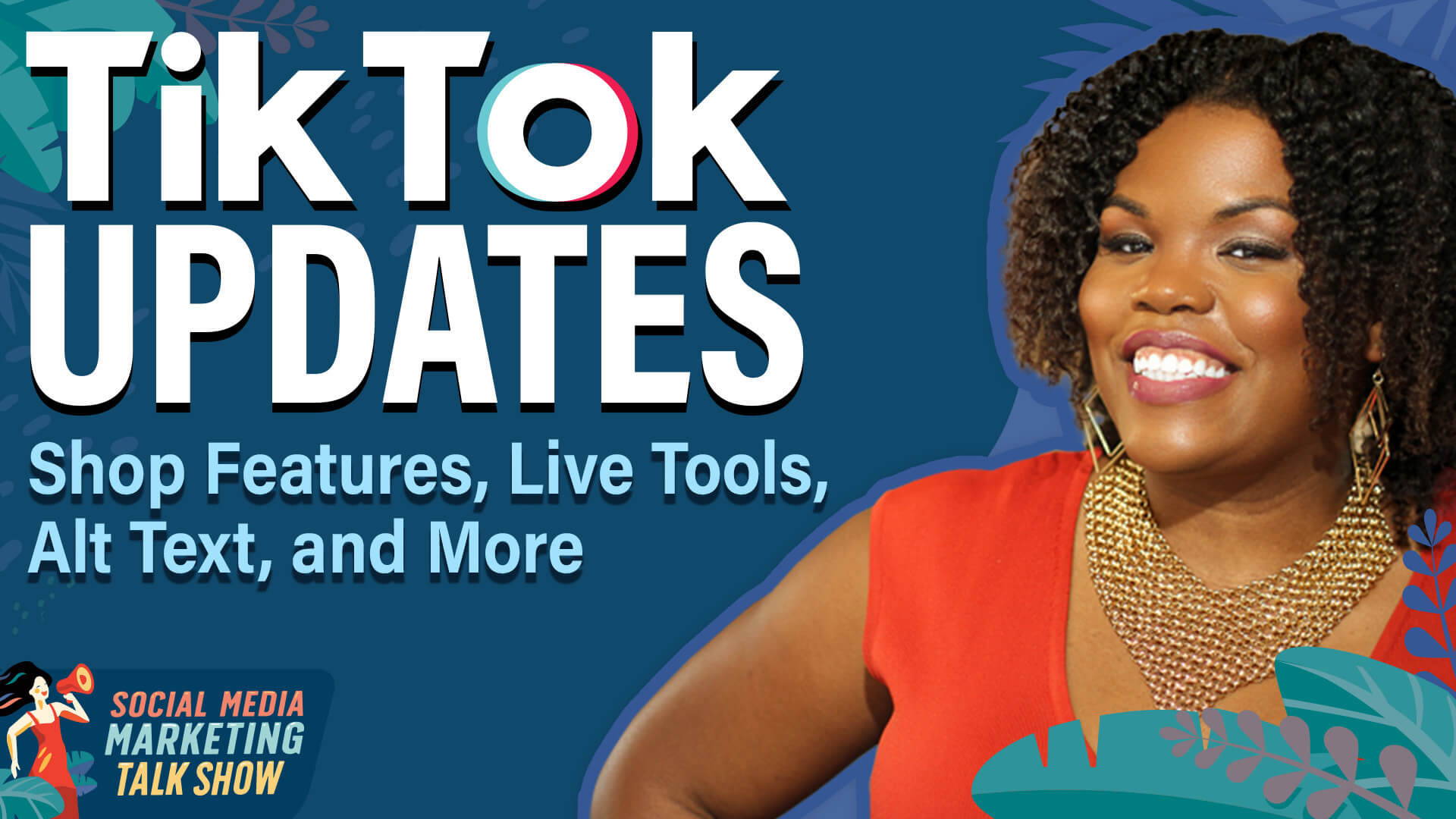
On this week's Social Media Marketing Talk Show, Jerry Potter and special guest Keenya Kelly discuss the latest TikTok news and what it means for marketers like you.
TikTok Shop Expands, Launches New Features
TikTok Shop continues its global expansion, launching in France, Germany, and Italy. Simultaneously, the platform is addressing seller concerns with several new features that may overcome previous objections to using the service.
The updated features include:
-
Customizable automated after-sales processes, giving sellers more control over post-purchase communication
-
The ability to ship to PO boxes, preventing delivery issues
-
Adjustable cancellation request windows, allowing sellers to determine when customers can cancel orders
-
Customizable return periods ranging from 14 to 90 days
These improvements address key pain points for e-commerce sellers, particularly those accustomed to the flexibility of platforms like Shopify. By allowing merchants to customize their sales processes, TikTok Shop is becoming more competitive with established e-commerce solutions.
Enhanced TikTok Live Features
TikTok is upgrading its live streaming capabilities with several technical improvements.
The TikTok Studio app now allows streamers to use multiple camera angles. "With the TikTok Studio app...you can easily add a phone, a friend's device, or an iPad as a second camera," Kelly explains. Users simply scan a QR code inside the app to link additional cameras.
While currently targeted at gamers using Windows devices, Kelly believes this feature will eventually expand to broader TikTok Shop use cases: "I think they're testing it out first with the gamers. But I think eventually, we will get access to that."
Mark Viewers in Live
This new live-streaming feature allows streamers to highlight specific viewers in their broadcasts, making it easy to identify friends, team members, or important viewers' engagement during busy live streams.
TikTok Local Expansion
TikTok is expanding its local services feature into the U.S. market after successful testing in Southeast Asia.
The local services feature lets influencers and creators use discount codes and vouchers in their content to entice viewers to visit local brick-and-mortar establishments such as bars, restaurants, and hotels.
TikTok Reviews
A new feature being tested enables users to leave reviews on local businesses directly in the comments section of videos, similar to Yelp but integrated within TikTok's platform.
TikTok Footnotes
This feature allows users with accounts at least 6 months old and no community guidelines violations to add context to videos, potentially serving as a way to provide additional information or alternative viewpoints.
TikTok Security Features
New security measures include enhanced two-step verification and the ability to designate which devices are authorized to access accounts, making it safer for teams and agencies to manage brand accounts.
Other Features We Discussed
We also discussed what marketers can expect from the new Alt Text feature, a potential expansion of the Business Creators Program, and more.
Watch it on YouTube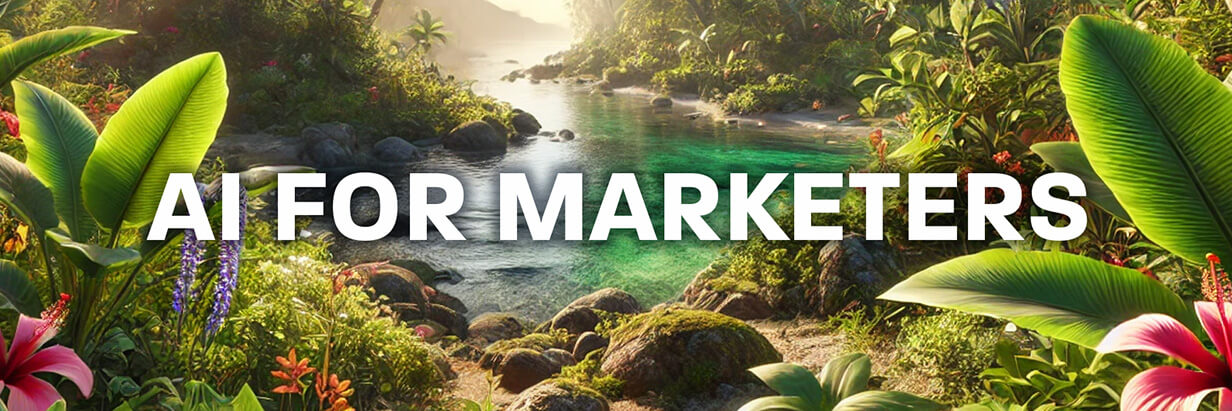
9 Powerful AI Tools That Won't Cost You a Dime
Tired of stripped-down "free" AI tools that promise the world but push you to upgrade? Rick Mulready just discovered nine completely free AI tools that are actually full-featured and powerful.
The most impressive one comes from Google, and most people have no idea it exists!
Ever waste hours scheduling meetings? One of these tools uses AI to optimize your calendar and defend your deep work time.
His favorite lets you analyze multiple documents, videos, and websites simultaneously, creating connections between all your sources. It's like having a research assistant that never sleeps!
If you're trying to streamline your workflow or build an AI-powered business without breaking the bank, watch more here.
Buyer Personas vs. Ideal Customer Profiles and How AI Can Help
Ever confused about the difference between buyer personas and ideal customer profiles? You're not alone. In this week's In-Ear Insights, Chris Penn and Katie Robbert dive into this common marketing confusion and why it matters more than ever in the age of AI.
They unpack why most buyer personas are missing the mark, how this creates massive blind spots in your content strategy, and why focusing only on buyers is leaving money on the table.
They also challenge conventional thinking about customer journeys and reveal why separating your marketing between prospects and existing customers might sabotage your growth.
Then, they explore how deep research and AI tools can transform your understanding of potential customers without crossing into creepy territory. Plus, they introduce practical frameworks like the "Five Ps" and "CASINO" approach that can immediately upgrade your customer analysis. Read more here.
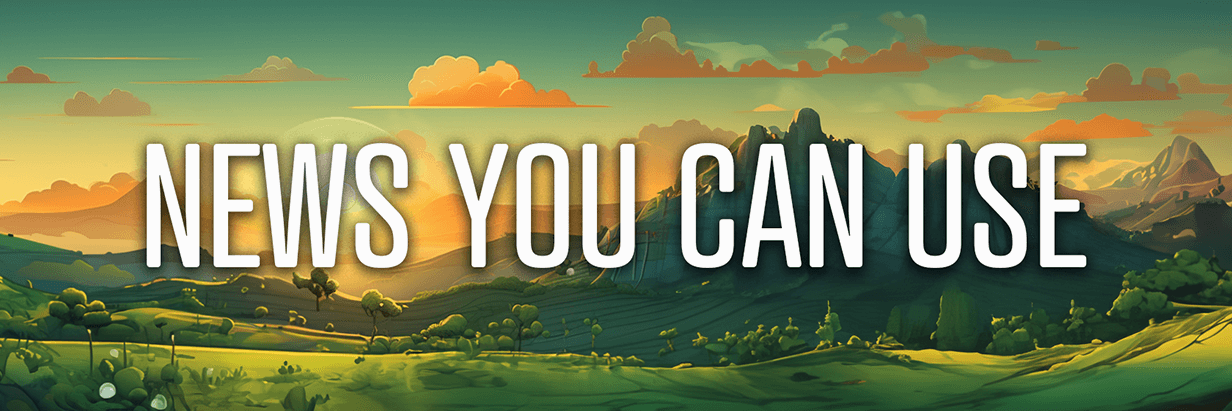
Time Spent on Instagram and Facebook Is in Decline: During testimony in front of the FTC on Wednesday, Mark Zuckerberg admitted that Facebook and Instagram's share of time spent on social media apps has "gone down meaningfully" and that "a lot of the interaction" people have directly with their friends has shifted to messaging apps. This shift to messaging is not a new trend. However, Zuckerberg's admission represents a notable disclosure about metrics that Meta has typically avoided discussing publicly. Social Media Today
Pinterest Performance Essentials Skills Badge: Starting today, users in the Pinterest Academy can be among the first to earn this badge. To earn the badge, users must complete ten performance-focused courses. After completing the courses, users must pass a 20-question quiz to earn the badge. The Performance Essentials skills badge is currently available to anyone using Pinterest Academy in English, with more languages coming soon. Pinterest
Meta Launches Edits App: Edits provides a dedicated space where users can track ideas, manage projects, and edit and export watermark-free videos without leaving the app. The app includes powerful tools such as a high-quality camera, frame-accurate timeline, and special effects like cutouts and AI-powered animation. Users can optimize their content through an inspiration feed of reels with trending audio and performance insights. The Ideas feature lets users keep track of video concepts in one place, including jotting down ideas and adding notes to saved reels. Edits is available globally as a free download in the App Store and Google Play Store, with users able to sign in using their Instagram accounts. Instagram
LinkedIn Introduces Qualified Leads Optimization: Qualified Leads Optimization focuses ad delivery on leads that have signaled readiness to buy and provides deeper attribution to prove pipeline contribution and revenue impact. Users can define lead quality via Zapier using their own lead generation system or third-party CRMs such as HubSpot, Dynamics, or Salesforce. Qualified leads can be sent to the LinkedIn Campaign Manager using the LinkedIn Conversions API. Campaign Manager will then match and optimize delivery based on the highest quality leads. Qualified Leads Optimization can be applied to any campaign using the Lead Generation objective within Campaign Manager and is now generally available to all customers. LinkedIn
Pinterest Academy Enhancements: The platform now offers new courses and webinars to enhance learning opportunities and has developed four learning paths tailored to unique brand goals. Each learning path includes courses about a specific topic or marketing objective. The first learning path option is "Drive shopping on Pinterest." The second learning path option is "Reach your dream customers." The third learning path option is "Power up your performance." The fourth learning path option is "Measure your success." Pinterest
X Experiments With Updated Video Playback UI: The new design moves engagement counts up from the bottom of the screen and places function buttons into the lower black bar. Social Media Today
YouTube Auto-Dubbing Access Expands: All creators in the YouTube Partner Program now have early access to auto-dubbing and can self-enroll via Studio. YouTube is working to expand auto-dubbing to more creators in the future. YouTube
OpenAI to Feature The Washington Post in ChatGPT: As part of this partnership, ChatGPT will display summaries, quotes, and links to original reporting from The Post in response to relevant questions. ChatGPT will highlight The Post's journalism across politics, global affairs, business, technology, and more, always with clear attribution and direct links to full articles. Open AI
Google Scraps Plans to Phase-Out Cookies: Google has decided to maintain its current approach to third-party cookies in Chrome rather than implementing a new stand-alone prompt for users. This decision comes after considering diverse industry perspectives, accelerated adoption of privacy-enhancing technologies, emerging AI opportunities for browser security, and evolving global regulations. While continuing to enhance privacy protections in Incognito mode (including IP Protection planned for Q3 2025), Google will engage with the industry to redefine the role of Privacy Sandbox APIs and develop an updated roadmap for these technologies in the coming months. Google
LinkedIn Highlights Premium Page Enhancement: In a recent post, the platform made note of the ability for Premium Company Page users to invite followers of similar Pages. LinkedIn
LinkedIn Verification Expands to Other Sites and Platforms: is expanding its free verification system to the wider web, allowing external sites and platforms to integrate LinkedIn verification rather than building their own tool. Adobe is among the first companies to sign up. Adobe is integrating LinkedIn verification into its new Content Authenticity app and existing Behance portfolio platform. It allows creators who've gone through LinkedIn's verification to display a "Verified on LinkedIn" badge on their profiles. If verified creators use Adobe's digital Content Credentials tools, their identity will also appear alongside their work whenever it's shared on LinkedIn. Alongside Adobe, other early adopters of the expanded verification system include enterprise platforms TrustRadius, G2, and UserTesting. The Verge
Meta Announces Anti-Spam Measures for Facebook: The company is launching initiatives to reduce spammy content that disrupts user experience and authentic creator visibility. Facebook will limit reach and monetization for accounts using tactics like excessive hashtags, unrelated captions, or content duplication. In addition, a comments system allows users to flag irrelevant responses and enhanced Moderation Assist tools will automatically hide comments from suspected fake identities. Meta
Meta Testing Enhanced Verification Features: One new test feature offers advanced original content protection that allows subscribers to request human review of original content on Instagram. The feature adds an "Original by" label linking back to the subscribed creator on any reposts, helping maximize engagement for original content. Meta is also testing new in-app education that more clearly tells people when a business account is not yet Meta Verified. Meta
Snapchat Affiliate Program: Marketers, publishers, and creators around the world can now earn rewards for each qualified advertiser they refer to Snapchat. Snap
Ads in Threads: Meta is expanding Threads ads to all eligible advertisers globally and opening access to the inventory filter. This new placement for the Threads feed will be on by default for new campaigns using either Advantage+ or Manual Placements. Advertisers have the option to opt out of Threads feed via Manual Placements. These ads will be delivered in select markets at launch and will roll out to additional markets as Meta continues to test and learn. During early testing, ads in Threads feed will be image ads that appear between pieces of content in the Threads home feed for a small percentage of people. Meta
YouTube Announces Future Features: YouTube TV members will soon be able to build their own multi-view configurations with select non-sports content, starting with popular channels and expanding later. More creators will gain access to voice-reply capabilities for comments on their videos later this year. "Ask Music" will let Premium and YouTube Music users create personalized radio stations by describing the type of music they want, currently available in English on iOS and Android in select countries. YouTube Premium users on mobile can access expanded playback speeds of up to 4x. A TV interface upgrade is coming this summer with improved navigation, playback controls, and streamlined access to comments and channel information. YouTube
YouTube Tests Video Results Carousel Search Results: This new feature will use AI to highlight clips from videos that will be most helpful for your search query, providing another way to discover content when searching on YouTube in addition to topics and information related to your search query. This is most likely to show when you search for more information about products you're shopping for (such as "best noise canceling headphones") or when you search for more information about locations or things to do in those locations (such as "museums to visit in San Francisco"). We're rolling this test out to a small number of YouTube Premium members in the US for some English search queries. YouTube
What Did You Think of Today's Newsletter?
Did You Know?
The name "cranberry" comes from Dutch and German settlers who called them "crane berries" due to the resemblance of the cranberry flower to a crane's head. Over time, the "e" was dropped.

Michael Stelzner, Founder and CEO
P.S. Add
michael@socialmediaexaminer.com into your contacts list. Use Gmail?
Go here to add us as a contact.
We publish updates with links for our new posts and content from partners. Your information: Email:
tukangpostemel@gmail.com Opted in on: 2021-09-06 17:03:43 UTC.







 On this week's Social Media Marketing Talk Show, Jerry Potter and special guest Keenya Kelly discuss the latest TikTok news and what it means for marketers like you.
On this week's Social Media Marketing Talk Show, Jerry Potter and special guest Keenya Kelly discuss the latest TikTok news and what it means for marketers like you. 

